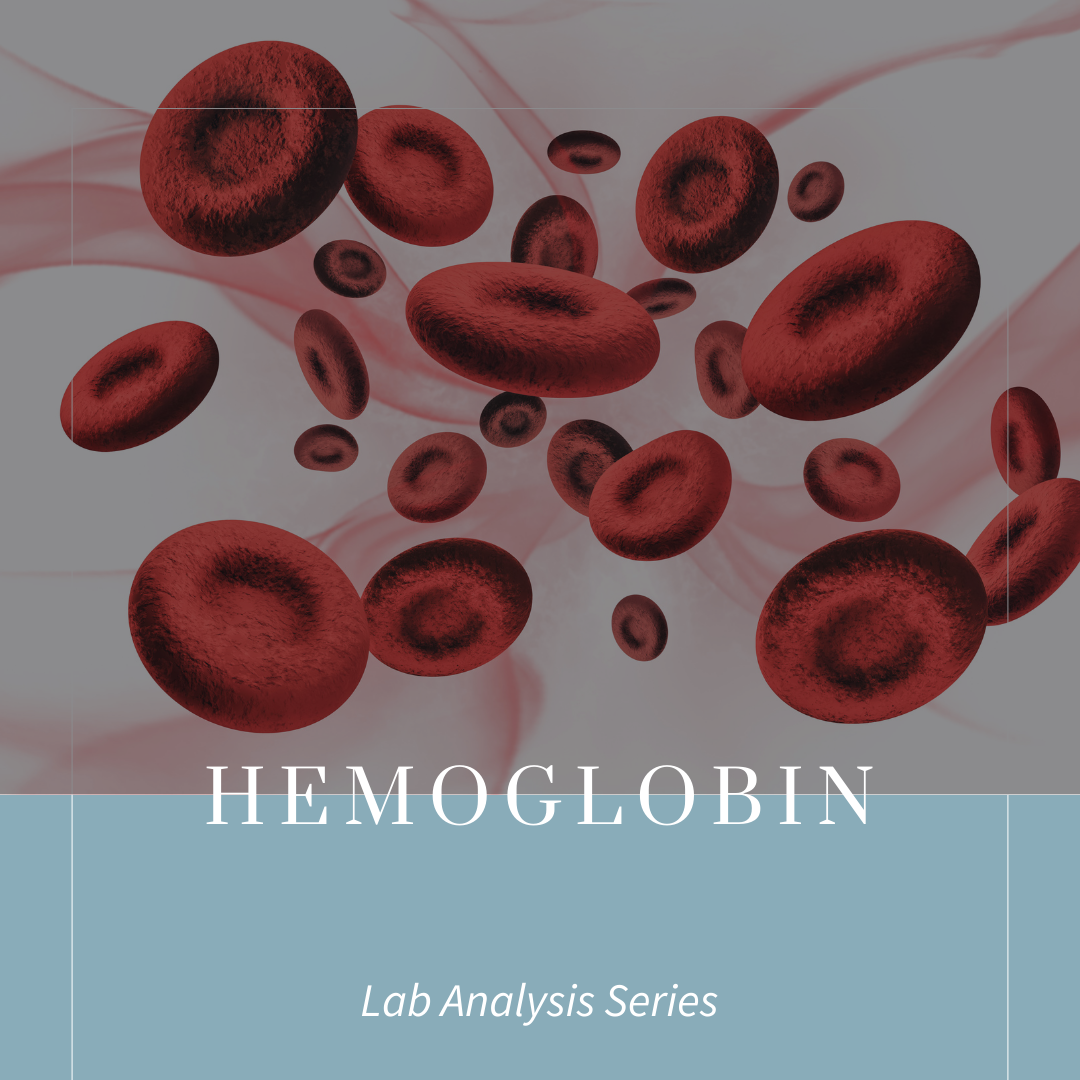Hemoglobin TestingHemoglobin (HB) measures the total amount of hemoglobin in the blood. Total hemoglobin is a combination of hemoglobin bound to red blood cells and free floating hemoglobin. This is a part of the complete blood count (CBC) panel. There are multiple types of hemoglobin that can be found in circulation, though the majority is bound to red blood cells. There are several subunits of hemoglobin, with subunit beta is a globin protein (HBB) and hemoglobin subunit HBA), make up the most common form of hemoglobin in RBC. Other forms include HBF, or fetal hemoglobin, which is found in unborn babies and newborns. Hemoglobin is the major carrier of oxygen on RBCs. It is a complex structure that is formed in the early phases of erythropoiesis. Hemoglobin also acts as a buffer for carbon dioxide formed as a byproduct of cellular metabolism. Not only can low hemoglobin cause hypoxia in the cells, but it can lead to a buildup of “pollution” as the CO2 fails to be removed correctly. Hemoglobin ranges should always be assessed in conjunction with hematocrit, mean corpuscular volume (MCV), mean corpuscular hemoglobin (MCH), mean corpuscular hemoglobin concentration (MCHC), serum ferritin, serum iron, total iron binding capacity (TIBC), and transferrin saturation (iron saturation) to determine the cause of high or low values. Hemoglobin in PregnancyDuring pregnancy hemoglobin levels vary widely based on gestation and physiology. In the initial few weeks of pregnancy there is a slight increase in hemoglobin levels as the cessation of the menstrual cycles reserve iron and hemoglobin production is increased for uteroplacental needs. Later in the first trimester there can be a slight drop in hemoglobin as iron absorption decreases significantly during the first trimester. During the second trimester there is a continued drop in serum hemoglobin due to hemodilution. Hemoglobin concentration physiologically diminishes by approximately 0.5 g/dL during the second trimester. This natural drop, and mild hypoxia triggers an increase in RBC production starting at around 20 weeks gestation. From 20 weeks gestation through approximately 24 weeks gestation there is a 35% increase in RBC production. This increase in RBC counts also increases hemoglobin counts. Postpartum changes in hemoglobin levels depends on the birth experience. There is a slight decrease due to the normal blood loss of childbirth. Significant elevations have been documented between measurements of hemoglobin taken at 6–8 weeks postpartum and those taken at 4–6 months postpartum, indicating that it takes at least 4–6 months to restore the physiological dip in hemoglobin to the prepregnancy ranges. High Hemoglobin in PregnancyElevated hemoglobin >13 g/dL in the first trimester is associated with a higher risk of maternal and fetal complications in pregnancy. This risk increases 4-fold in the first trimester hemoglobin is greater than 14.5 g/dL. Levels should decrease throughout pregnancy, not increase, due to hemodilution. Causes of High Hemoglobin in Pregnancy
Low Hemoglobin in PregnancyStudies have found that patients with thalassemia and sickle Cell anemias have other nutritional deficiencies. 40 – 75% are deficient in vitamin A, vitamin C, vitamin D and selenium. 28–38% are deficient in B vitamins. Hemoglobin levels (<10 g/dL) in the third trimester is a risk factor for postpartum hemorrhage. According to the Merck Manual, pregnancy anemia is defined as hemoglobin <11 g/dL, and a hematocrit <33% in the first trimester, and hemoglobin <10.5 g/dL and a hematocrit <32% in the second trimester, and hemoglobin <11 g/dL and a hematocrit <33% in the third trimester. It also states that a hemoglobin <10.5 g/dL in the first trimester should be treated prophylactically. Causes of Low Hemoglobin in Pregnancy
Want to Know More...Copyright © 2024 Functional Maternity, all rights reserved. The content in this article is not intended to be a substitute for professional medical advice, diagnosis, or treatment. Always seek the advice of your physician or other qualified health provider with any questions you may have regarding your medical condition.
0 Comments
Leave a Reply. |
Hi There!I'm Sarah Thompson, the author of Functional Maternity, and the upcoming book Beyond Results - A practitioner's Handbook to Effective Functional Lab Analysis in Pregnancy. Lab Tests
All
|


 RSS Feed
RSS Feed